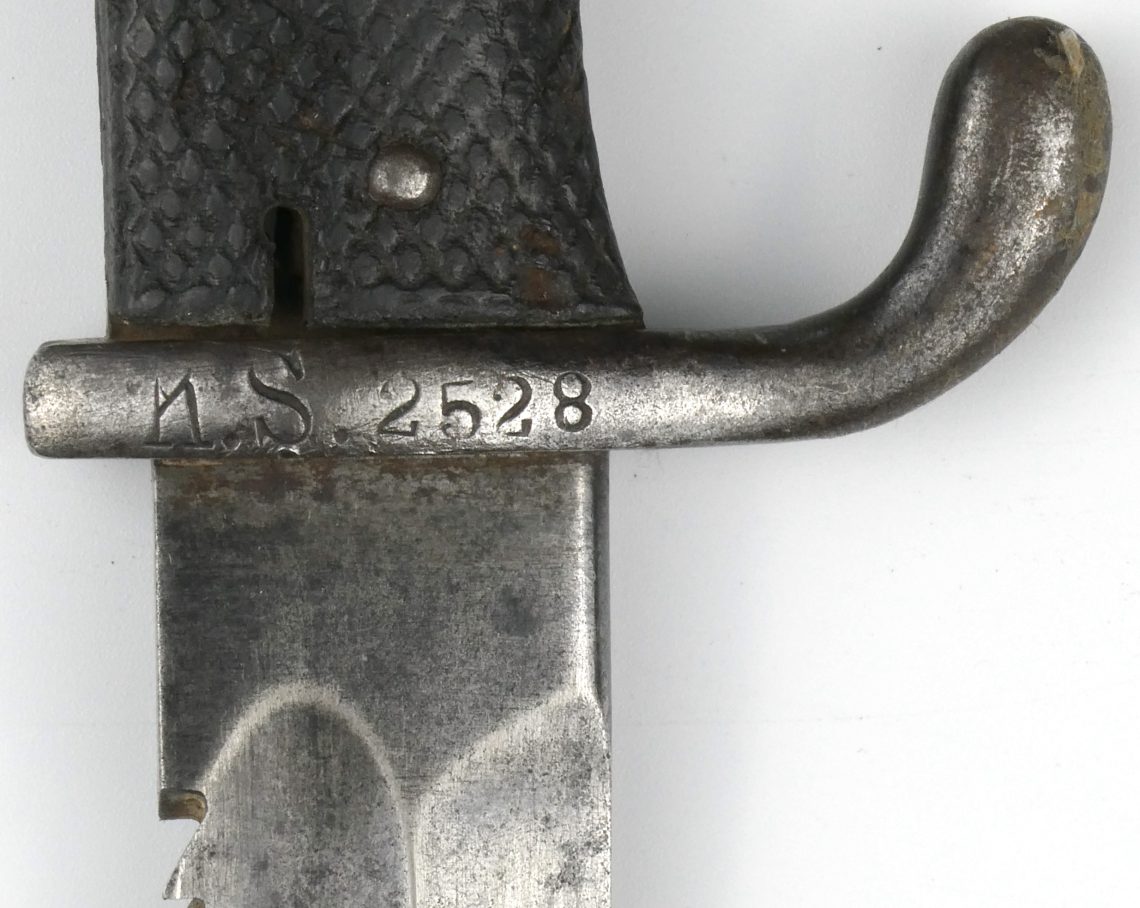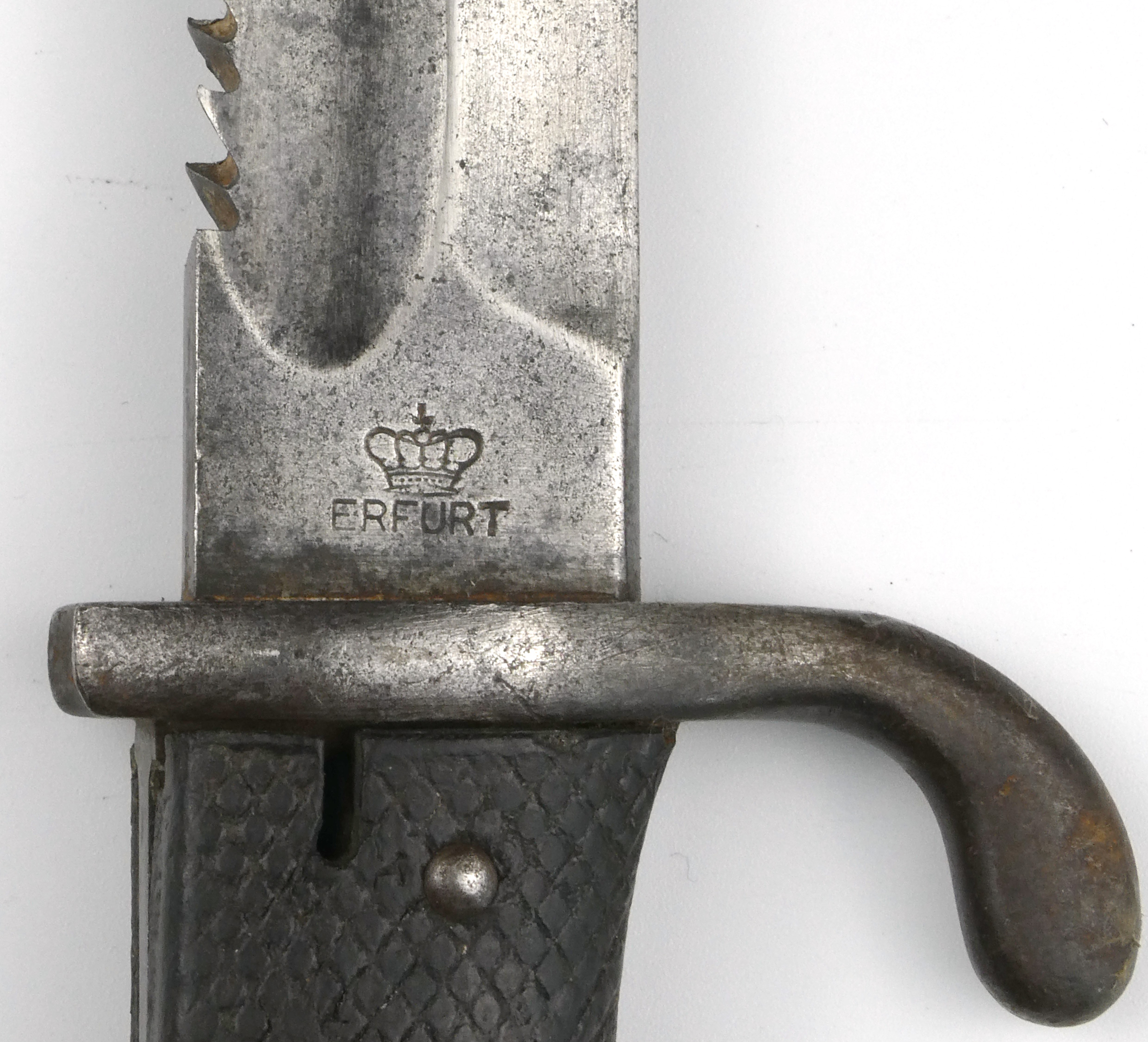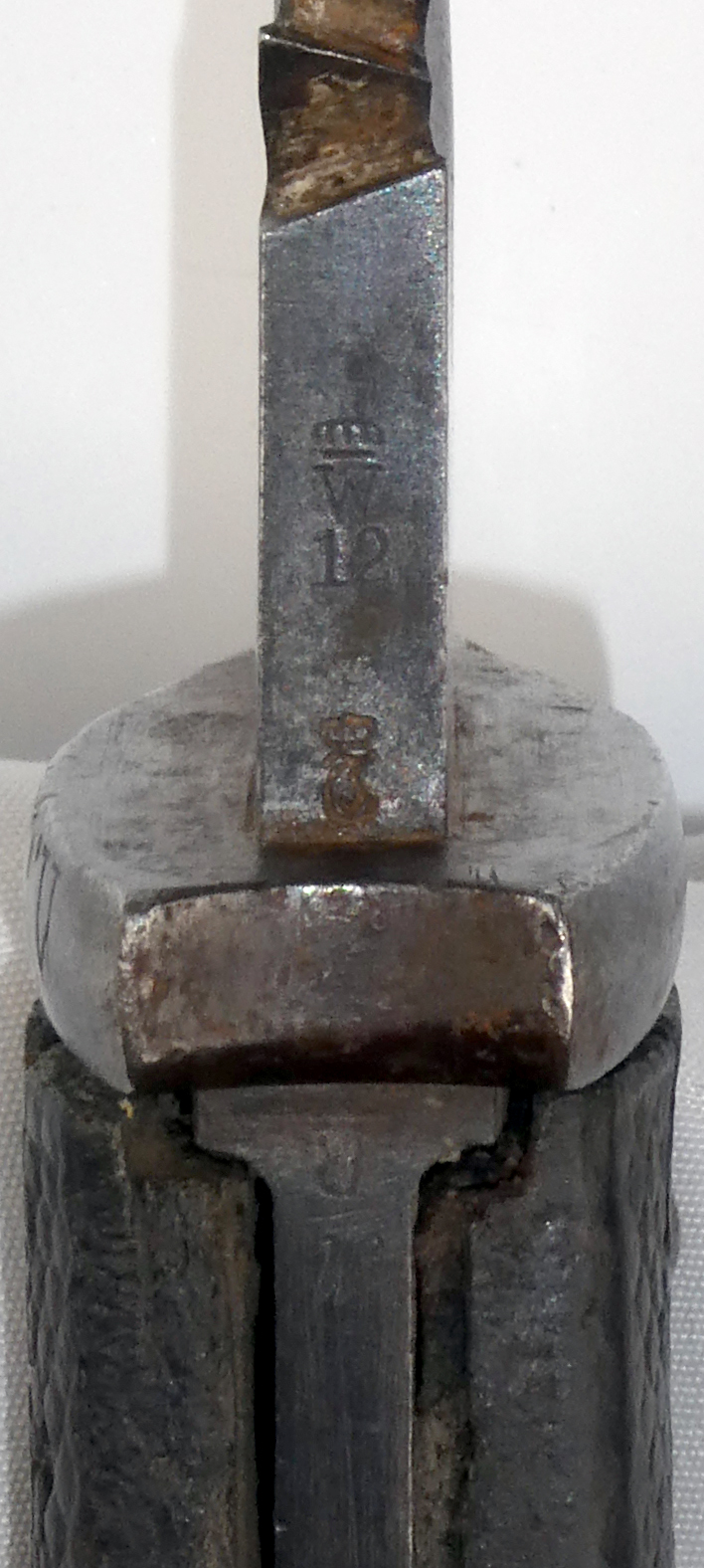The kS98 bayonet was introduced on April 30, 1901 as the “Seitengewehr für Maschinengewehr-Schützen” (Bayonet for Machine Gun Troops), then renamed the Kurzes Seitengewehr (Short Bayonet, kS) on February 23, 1905 as part of Decree A.V.Bl 1905, No.5, S.37 [1]. It was originally meant for specialized troops such as machine gun crews, air crews, and signalers, as well as the Imperial German Colonial Troops, the Schutztruppen, in Germany’s African colonies [2]. The kS98 was simply a shorter version of the infamous “sawback” bayonets issued to the regular German Army [1][3]; the “saw back” was actually intended for cutting wire, not to cause further harm to enemy personnel [2]. The shorter length made the kS98 easier to handle and maneuver in close quarters so it became commonly used by all sorts of German infantrymen involved in trench warfare as a fighting knife [1].


This example was sourced from South Africa.
Edges:


Weapon Number:

The KS stamp on the bayonet’s guard indicates this example was intended for the Schutztruppe in South West Africa (modern day Namibia [4]), with “KS” meaning “Kaiserliche Schutztruppe” and the number indicating the particular rifle it was meant to be attached to [5].
Manufacturer’s Markings:


This example has a leather grip and was made in 1912, the last year of production at Erfurt [1]. The leather handle was largely replaced afterwards by wood since the leather tended to rot in tropical climates [2], but this was not an issue in the more arid climate of German South West Africa [5].
